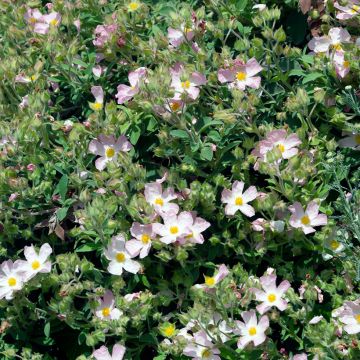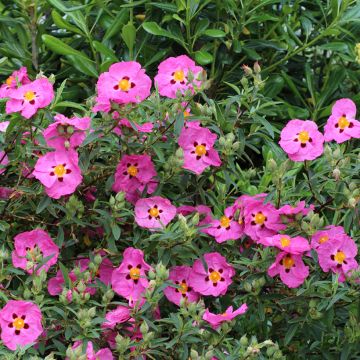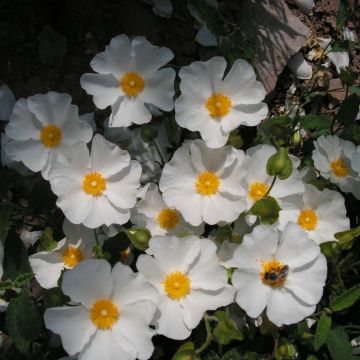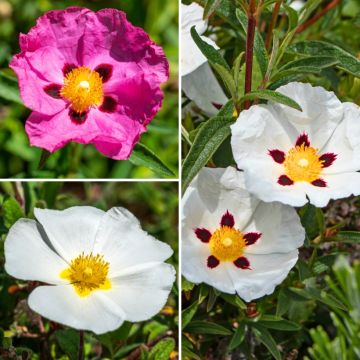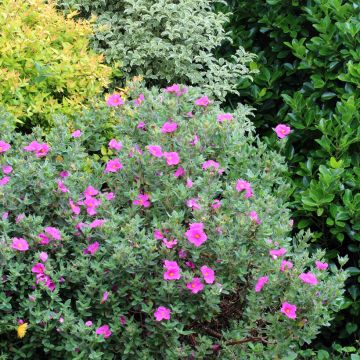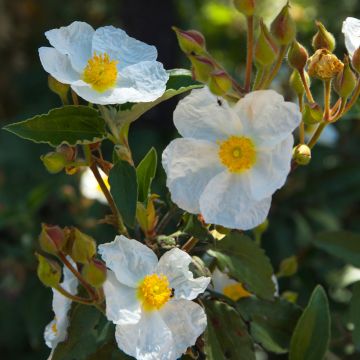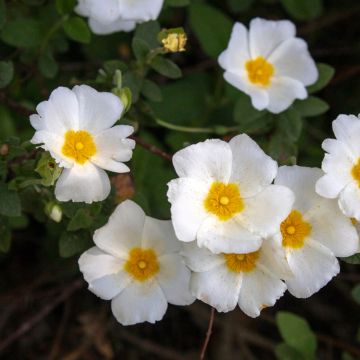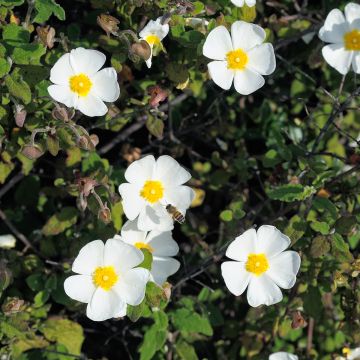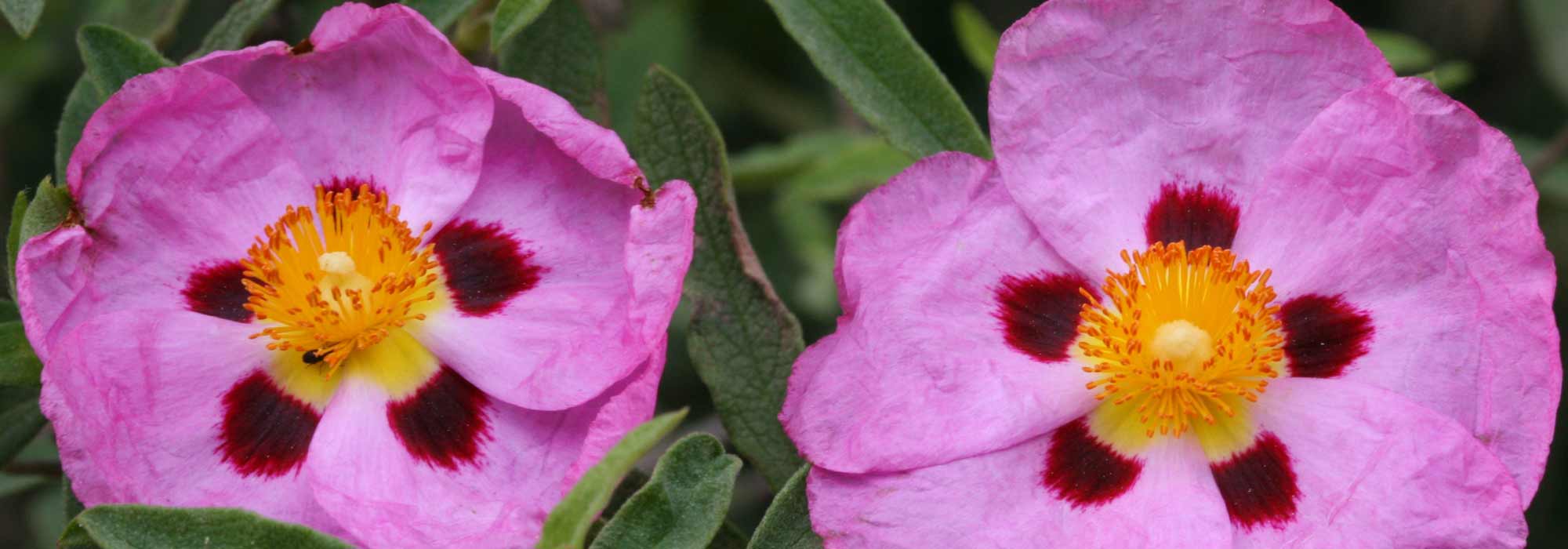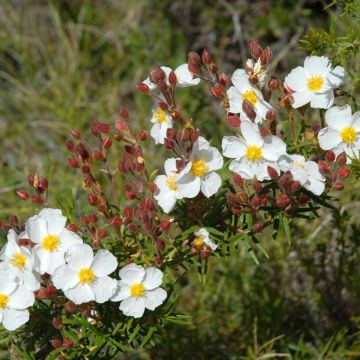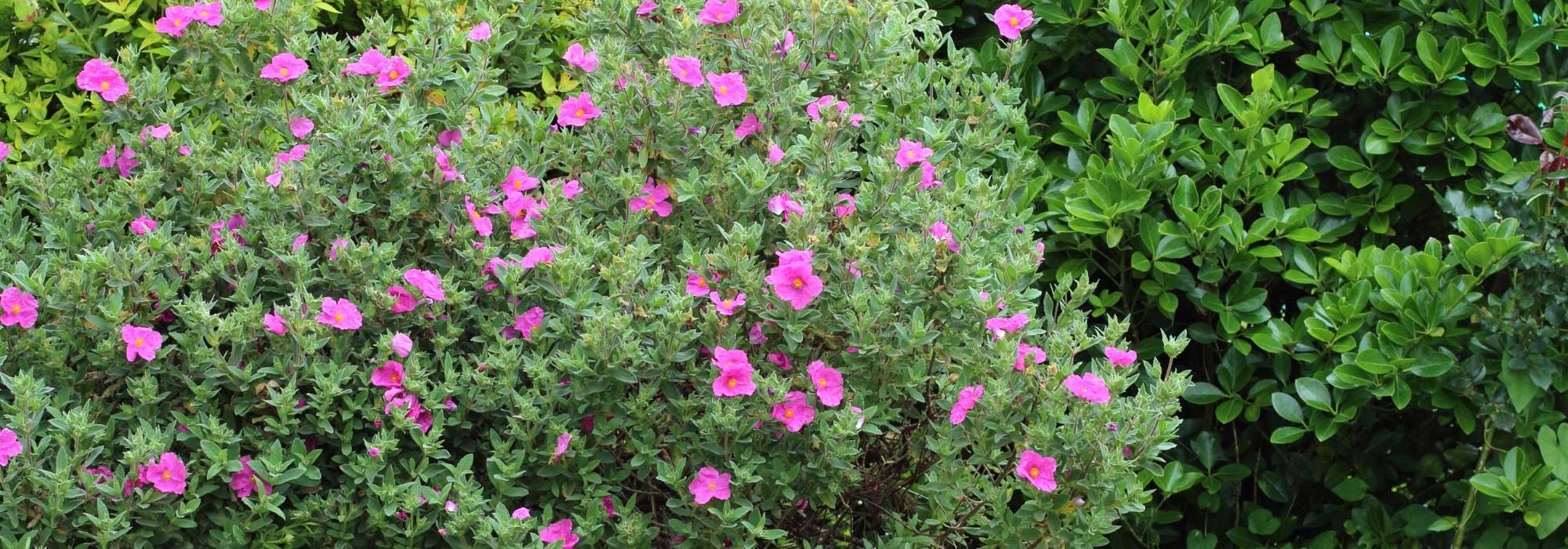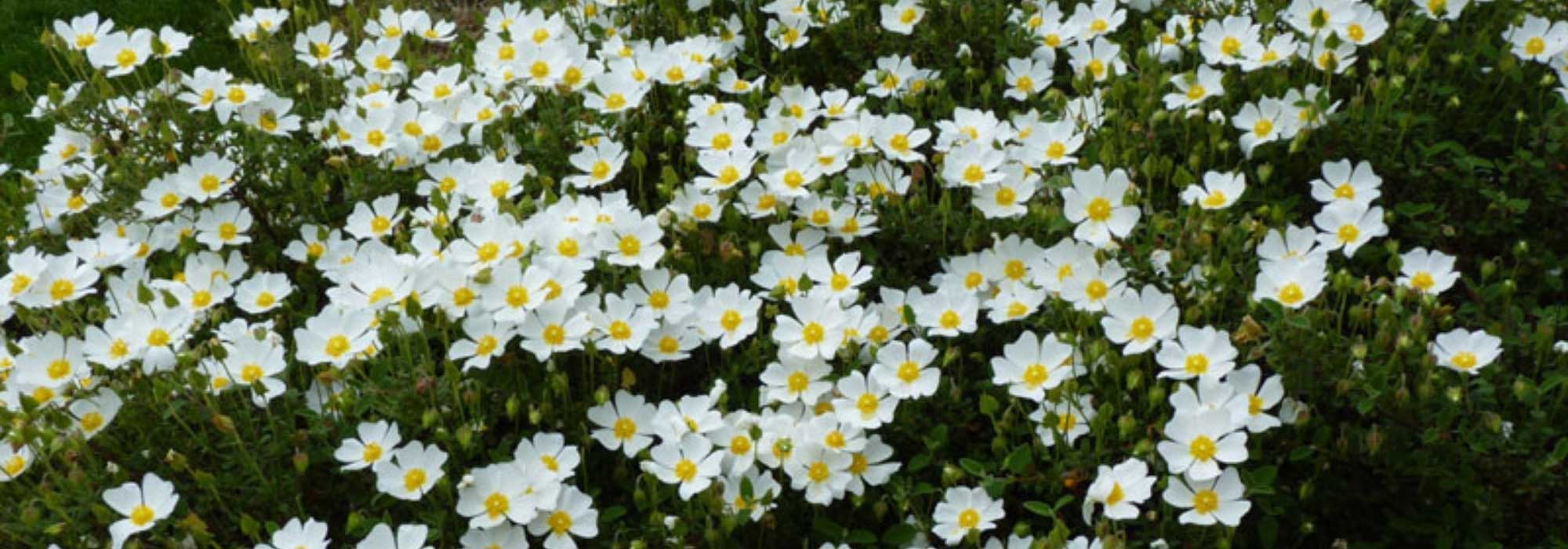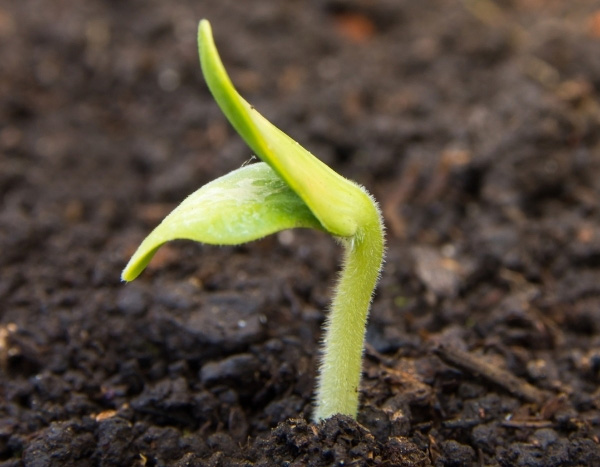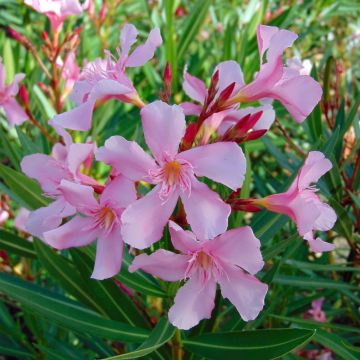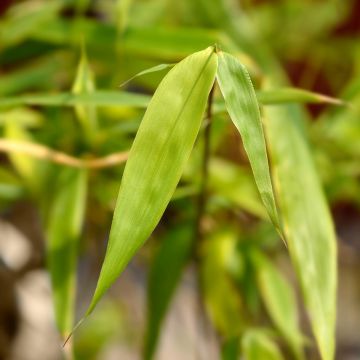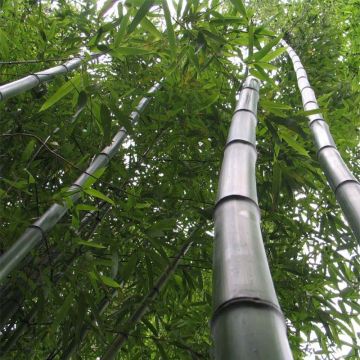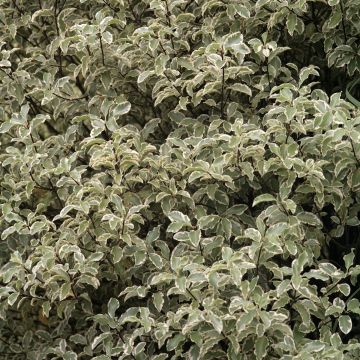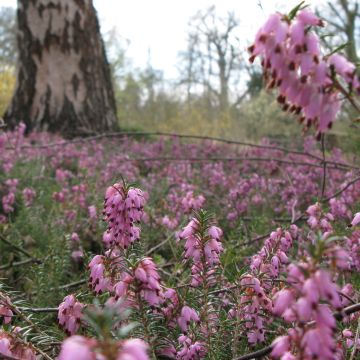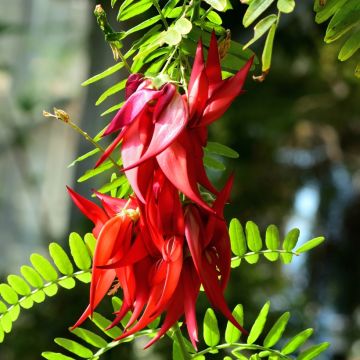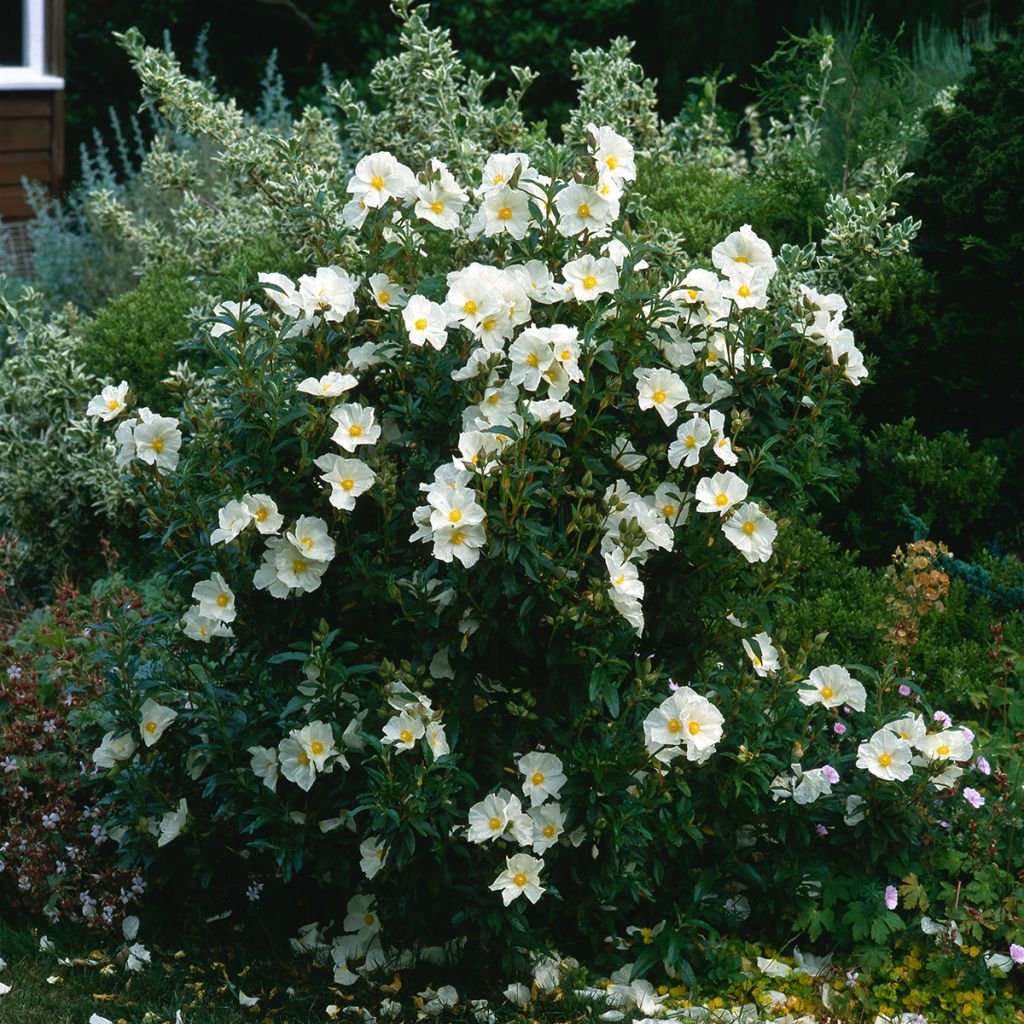

Cistus x florentinus Repens - Ciste
Cistus florentinus Repens - Rockrose
Cistus x florentinus Repens
Rockrose
Special offer!
Receive a €20 voucher for any order over €90 (excluding delivery costs, credit notes, and plastic-free options)!
1- Add your favorite plants to your cart.
2- Once you have reached €90, confirm your order (you can even choose the delivery date!).
3- As soon as your order is shipped, you will receive an email containing your voucher code, valid for 3 months (90 days).
Your voucher is unique and can only be used once, for any order with a minimum value of €20, excluding delivery costs.
Can be combined with other current offers, non-divisible and non-refundable.
Why not try an alternative variety in stock?
View all →This plant carries a 24 months recovery warranty
More information
We guarantee the quality of our plants for a full growing cycle, and will replace at our expense any plant that fails to recover under normal climatic and planting conditions.
Would this plant suit my garden?
Set up your Plantfit profile →
Description
Cistus x florentinus Repens is a variety of cistus interesting for its well-spreading vegetation and abundant spring flowering. This shrub forms excellent ground cover in dry, even arid, areas. Its dark green foliage is attractive even outside of flowering: evergreen in winter, it releases a very pleasant balsamic scent in warm weather. This 'creeping' cistus will only thrive in perfectly well-drained soil, not too rich, in a sunny rockery or at the edge of a woodland.
Cistus x florentinus Repens belongs to the family of cistaceae, like all cistus, and also helianthemums. It is the result of cross-breeding between the Cistus monspeliensis and the C. salviifolius 'Repens', with a truly spreading habit. All these plants are native to Mediterranean regions. The Cistus florentinus Repens is therefore a well-branched shrub, with a very spreading habit, reaching 40 to 50 cm (15.7 to 19.7 in) in height, with a spread of 1.25 to 1.50 m, or even more in rich soil. Its growth is quite fast, but the plant dies after about ten years. Flowering takes place in spring (April-May) or early summer (June) depending on the climate. It lasts 3 weeks to a month. The flowers, in round, open corollas are slightly crumpled and 2-3 cm (0.8-1.2 in) in diameter, pure white, enhanced at the heart by numerous bright yellow stamens. The petals overlap slightly. They only last for a day, but will already be replaced the next morning. The evergreen foliage is composed of small, thick, narrow, dark green leaves. They contain fragrant essential oils, which are active in very hot weather.
This very beautiful rockery and poor soil ground cover is perfectly adapted to drought and hardy down to -12/-15°C in dry soil. It will be magnificent on a slope or in a large rockery, forming a magnificent cascade of flowers in spring. Create a bed to accompany your cistus, evoking the scrubland, by mixing the foliage and scents of lavenders, creeping rosemary, thymes, teucriums, and other aromatic perennials. Add, for example, California poppies and dryland euphorbias to bring some dynamism to your composition. You can plant this cistus in coastal gardens: it perfectly withstands sea spray.
Plant habit
Flowering
Foliage
Botanical data
Cistus
x florentinus
Repens
Cistaceae
Rockrose
Mediterranean
Other Cistus - Rockrose
View all →Planting and care
Plant cistus after the last frost in regions on the edge of the hardiness zone, but in early autumn in a dry and hot climate. Plant them in a sheltered and sunny position in very well-drained soil, even rocky or sandy, preferably poor. Cistus x florentinus Repens cistus tolerates limestone well if the soil is not too compact. This hybrid also tolerates partial shade and competition from tree roots, on the edge of the undergrowth. Moderately hardy (down to -12 to -15 °C (10.4 to 5 °F) at the peak for a mature subject), it does not tolerate severe and prolonged frosts, especially in wet soil. You can lightly prune the stems after flowering to encourage the plant to branch out. Avoid severe pruning!
Attention: cistus do not tolerate soils that are both hot and permanently wet: once they are well rooted, they should no longer be watered in summer (or very infrequently) in very hot and dry regions, or you risk seeing them wither.
Planting period
Intended location
Care
Planting & care advice
This item has not been reviewed yet - be the first to leave a review about it.
Similar products
Haven't found what you were looking for?
Hardiness is the lowest winter temperature a plant can endure without suffering serious damage or even dying. However, hardiness is affected by location (a sheltered area, such as a patio), protection (winter cover) and soil type (hardiness is improved by well-drained soil).

Photo Sharing Terms & Conditions
In order to encourage gardeners to interact and share their experiences, Promesse de fleurs offers various media enabling content to be uploaded onto its Site - in particular via the ‘Photo sharing’ module.
The User agrees to refrain from:
- Posting any content that is illegal, prejudicial, insulting, racist, inciteful to hatred, revisionist, contrary to public decency, that infringes on privacy or on the privacy rights of third parties, in particular the publicity rights of persons and goods, intellectual property rights, or the right to privacy.
- Submitting content on behalf of a third party;
- Impersonate the identity of a third party and/or publish any personal information about a third party;
In general, the User undertakes to refrain from any unethical behaviour.
All Content (in particular text, comments, files, images, photos, videos, creative works, etc.), which may be subject to property or intellectual property rights, image or other private rights, shall remain the property of the User, subject to the limited rights granted by the terms of the licence granted by Promesse de fleurs as stated below. Users are at liberty to publish or not to publish such Content on the Site, notably via the ‘Photo Sharing’ facility, and accept that this Content shall be made public and freely accessible, notably on the Internet.
Users further acknowledge, undertake to have ,and guarantee that they hold all necessary rights and permissions to publish such material on the Site, in particular with regard to the legislation in force pertaining to any privacy, property, intellectual property, image, or contractual rights, or rights of any other nature. By publishing such Content on the Site, Users acknowledge accepting full liability as publishers of the Content within the meaning of the law, and grant Promesse de fleurs, free of charge, an inclusive, worldwide licence for the said Content for the entire duration of its publication, including all reproduction, representation, up/downloading, displaying, performing, transmission, and storage rights.
Users also grant permission for their name to be linked to the Content and accept that this link may not always be made available.
By engaging in posting material, Users consent to their Content becoming automatically accessible on the Internet, in particular on other sites and/or blogs and/or web pages of the Promesse de fleurs site, including in particular social pages and the Promesse de fleurs catalogue.
Users may secure the removal of entrusted content free of charge by issuing a simple request via our contact form.
The flowering period indicated on our website applies to countries and regions located in USDA zone 8 (France, the United Kingdom, Ireland, the Netherlands, etc.)
It will vary according to where you live:
- In zones 9 to 10 (Italy, Spain, Greece, etc.), flowering will occur about 2 to 4 weeks earlier.
- In zones 6 to 7 (Germany, Poland, Slovenia, and lower mountainous regions), flowering will be delayed by 2 to 3 weeks.
- In zone 5 (Central Europe, Scandinavia), blooming will be delayed by 3 to 5 weeks.
In temperate climates, pruning of spring-flowering shrubs (forsythia, spireas, etc.) should be done just after flowering.
Pruning of summer-flowering shrubs (Indian Lilac, Perovskia, etc.) can be done in winter or spring.
In cold regions as well as with frost-sensitive plants, avoid pruning too early when severe frosts may still occur.
The planting period indicated on our website applies to countries and regions located in USDA zone 8 (France, United Kingdom, Ireland, Netherlands).
It will vary according to where you live:
- In Mediterranean zones (Marseille, Madrid, Milan, etc.), autumn and winter are the best planting periods.
- In continental zones (Strasbourg, Munich, Vienna, etc.), delay planting by 2 to 3 weeks in spring and bring it forward by 2 to 4 weeks in autumn.
- In mountainous regions (the Alps, Pyrenees, Carpathians, etc.), it is best to plant in late spring (May-June) or late summer (August-September).
The harvesting period indicated on our website applies to countries and regions in USDA zone 8 (France, England, Ireland, the Netherlands).
In colder areas (Scandinavia, Poland, Austria...) fruit and vegetable harvests are likely to be delayed by 3-4 weeks.
In warmer areas (Italy, Spain, Greece, etc.), harvesting will probably take place earlier, depending on weather conditions.
The sowing periods indicated on our website apply to countries and regions within USDA Zone 8 (France, UK, Ireland, Netherlands).
In colder areas (Scandinavia, Poland, Austria...), delay any outdoor sowing by 3-4 weeks, or sow under glass.
In warmer climes (Italy, Spain, Greece, etc.), bring outdoor sowing forward by a few weeks.






























